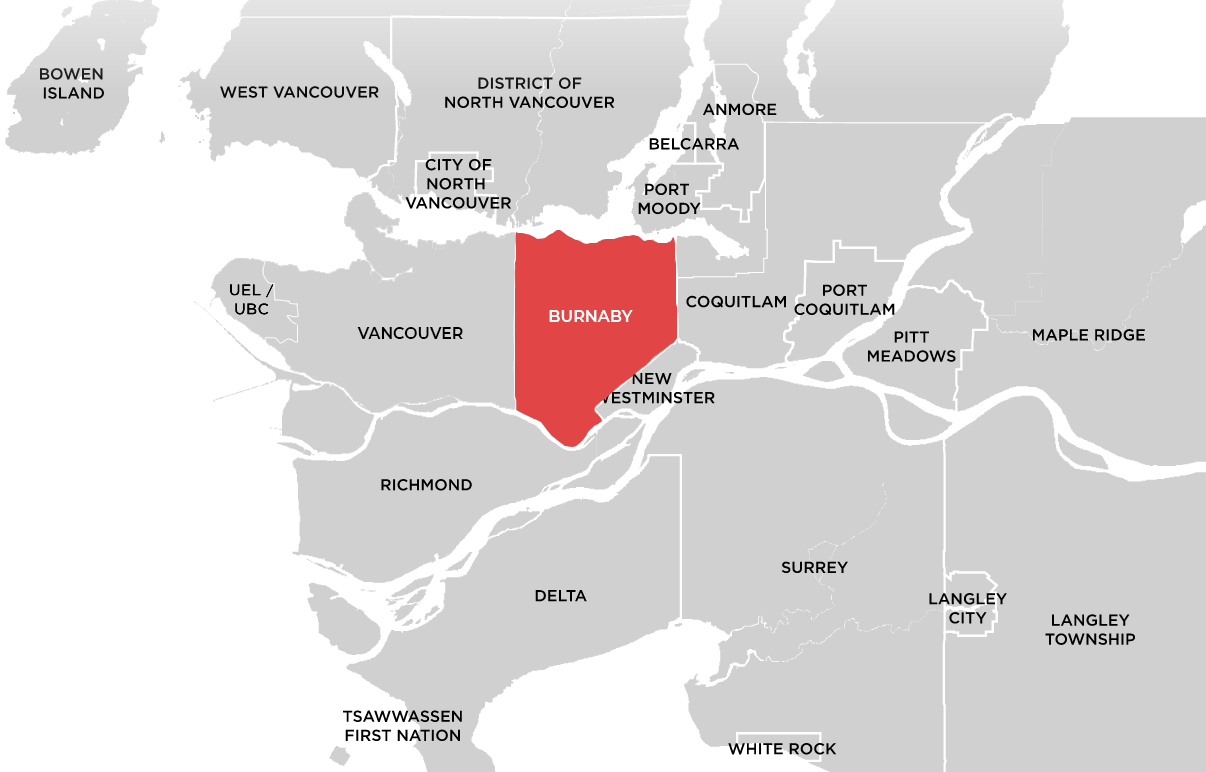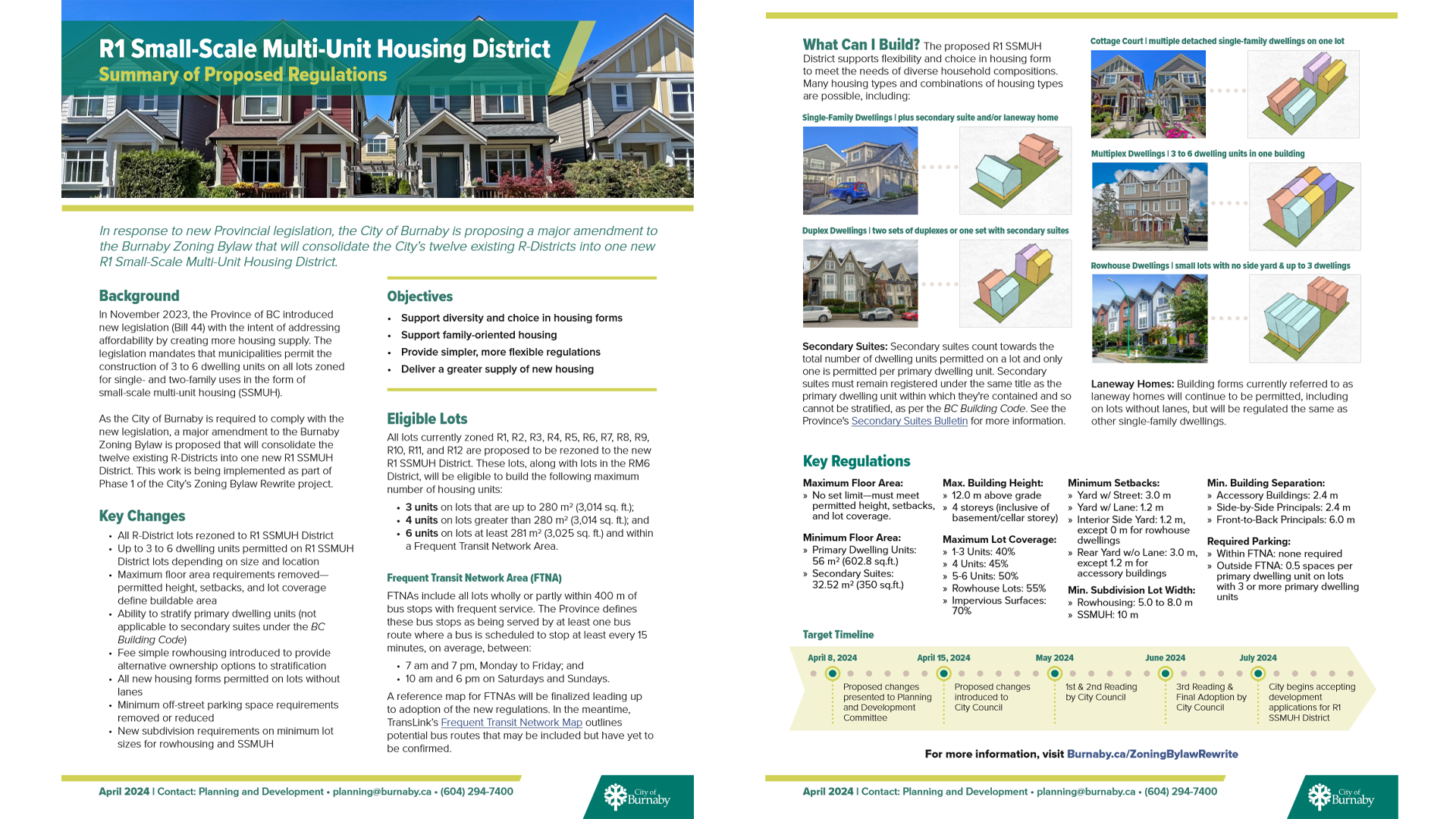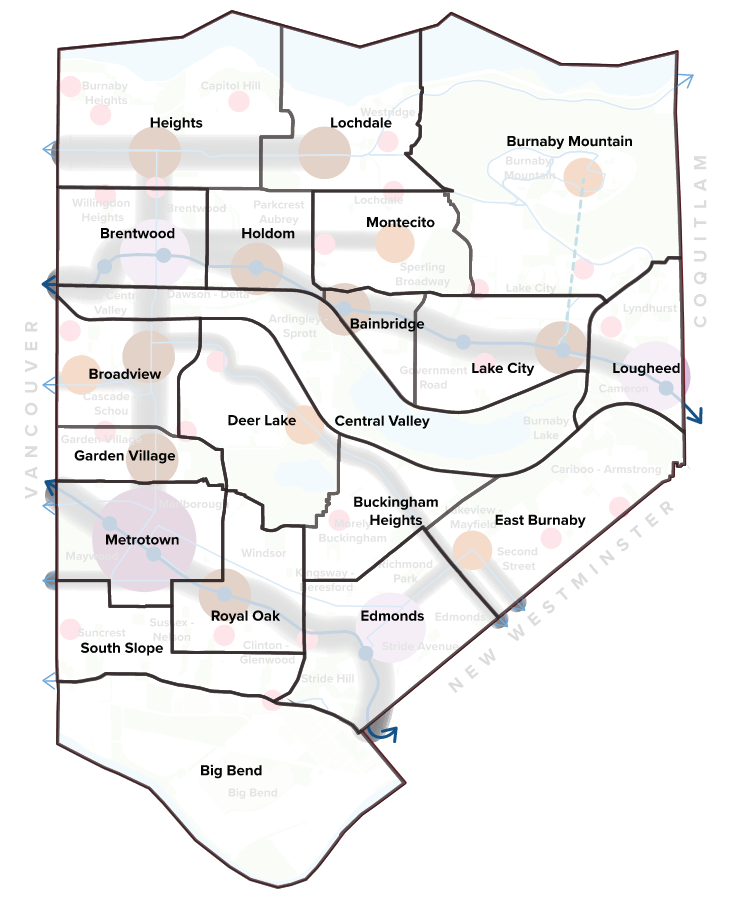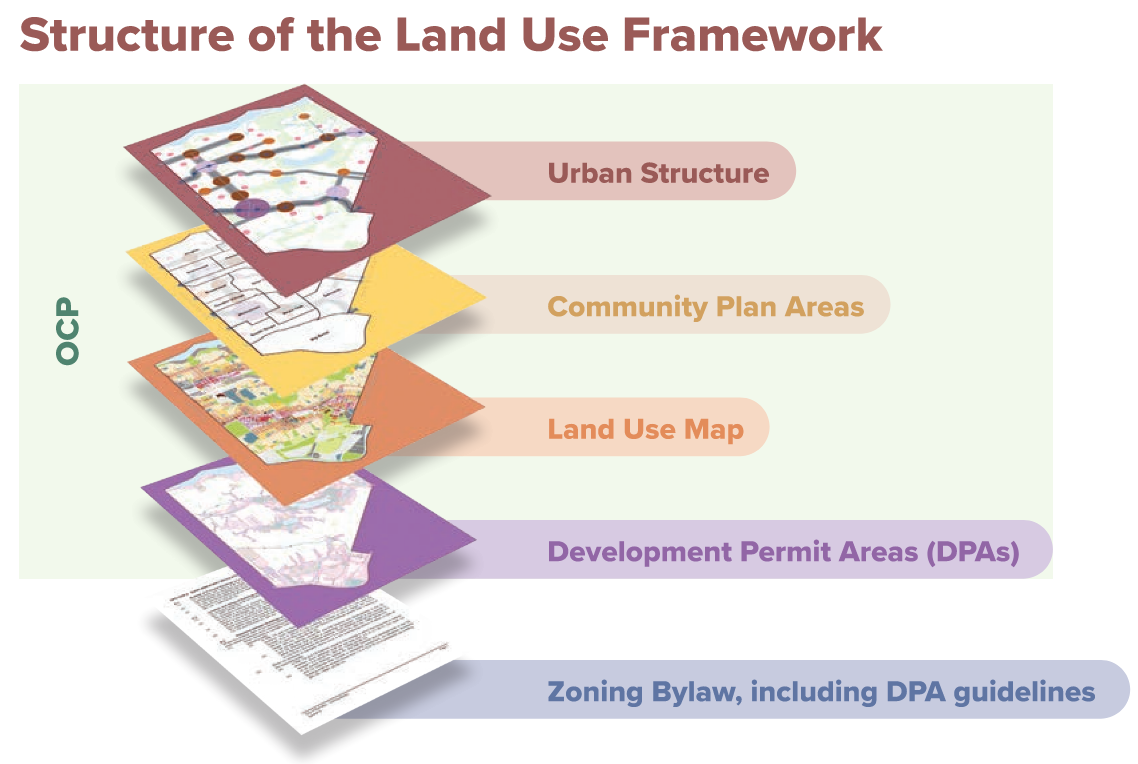
Burnaby is shaping its future, and if you’re involved in property development, it’s time to pay attention. The city’s Official Community Plan (OCP) is undergoing a significant update, and with it comes a fresh vision for how Burnaby will grow and evolve over the next 25 years. This updated plan, dubbed Burnaby 2050, is expected to be finalized by the end of 2025 and could have a huge impact on the way we live, work, and build.
Originally adopted in 1998 (the same year Google was born!), the OCP has guided Burnaby’s growth for over two decades. Now, the city is giving it a major refresh. The goal? To meet the needs of a growing population, provide sustainable housing options, and create a more connected, livable city. If you’re in real estate or urban planning, this is a key update you won’t want to miss.
Burnaby’s zoning changes, particularly the R1 SSMUH updates, are making this an exciting time for small-scale developers. This is a chance to build and invest in a city that’s actively reshaping its future.
.png)
One of the standout features of the OCP update is the new R1 SSMUH zoning rules, which allow up to six units on a single residential lot. Yes, you heard that right — six units. This is a game-changer for developers who want to maximize the potential of residential lots in Burnaby. And it doesn’t stop there: Burnaby has also removed the Floor Space Ratio (FSR) requirement for these lots. Now, the size of the building depends on setbacks, height, and lot coverage, not just FSR. So, if it fits within the rules, you can probably build it. This creates amazing opportunities for small-scale developers.
To show you how this plays out in real life, we’ve included one of our own projects — a four-plex designed for multigenerational living. It’s modern, flexible, and a great example of what’s possible with the new zoning rules. Want a sneak peek? Check out the link in the description for a closer look at this project.

But the OCP update isn’t just about developers. It’s also about making Burnaby a more affordable and livable city for everyone. The OCP includes policies to expand long-term rental housing. New developments will need to include a mix of market and non-market rental units. Whether you’re moving to Burnaby for work, school, or just need a more affordable option, these changes aim to increase the availability of rental housing in the city.
Burnaby’s growth will be focused on several key areas. Here’s a breakdown:

This area will continue to be the tallest and most dense part of the city, with the highest concentration of mixed-use development.
Areas like Brentwood, Lougheed, and Edmonds will see more mid- to high-rise developments, including apartments, parks, and community spaces.
If you’re near a SkyTrain station or an upcoming Bus Rapid Transit (BRT) route, your area is earmarked for higher density and more amenities. These areas will see medium to high-density buildings and plenty of new shops, cafes, and parks. Expect a lot of construction noise — but also a lot of new development.
For areas further from transit, “gentle densification” will be the focus. This means mid-rise buildings and a gradual shift away from single-detached homes.
Expect more rowhomes, duplexes, triplexes, and fourplexes popping up in these areas.
Here’s a quick guide to the expected building heights around SkyTrain stations:

If you’ve noticed more cranes in Burnaby lately, this is why. The city is ramping up density around transit hubs, making it easier to live, work, and play within walking distance of transportation.
Burnaby is rewriting its development playbook, and this update will shape how the city grows for decades. Whether you’re a real estate investor, builder, architect, or simply interested in what’s happening in your neighborhood, understanding the OCP changes is key. For developers, this is a massive opportunity to get ahead of the curve.

If you’re considering building a multiplex, townhouse, or any other development in Burnaby, feel free to reach out to us at daniel@jjarch.ca. We’re always happy to chat and offer guidance on your next project.
If this blog helped clear things up, don’t forget to like, share, and subscribe. We also have a detailed YouTube video on Burnaby 2050 that dives deeper into the plan and how it might impact your development strategies.
Stay tuned for our next post, where we’ll dive into the Tri-Cities OCPs and compare their growth plans with Burnaby’s.
Thanks for reading, and see you in the next one!